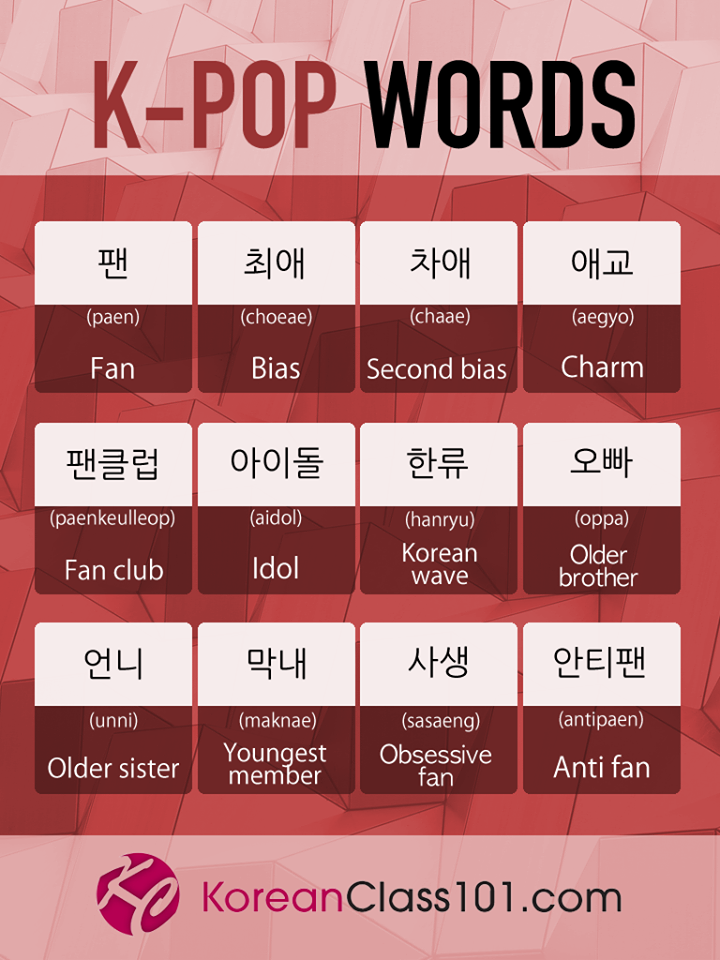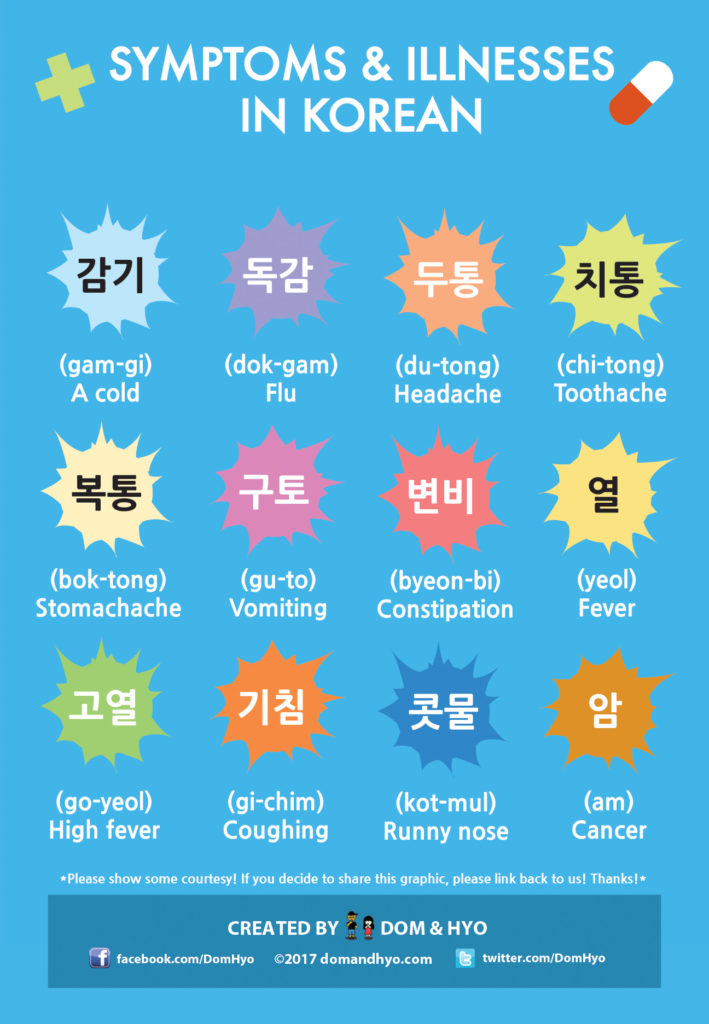

Expressing Demands, Permission, and Prohibition in Koreanħ.1 V-(으)세요 grammar = (1) honorific ending ~show respect, (2) making requests politelyħ.2 V-지 마세요 grammar = please don’t V~ requesting someone not to do something politelyħ.3 V-아/어야 하다 grammar = must, have to ~express necessity to do somethingħ.4 V-아/어도 되다 grammar = may, can I…? ~ask permission or approval for a behaviorħ.5 V-(으)면 안 되다 grammar = may not, not allowed ~express prohibition or limitation of an actionħ.6 A/V-지 않아도 되다 (안 A/V-아/어도 되다) grammar = don’t have to ~express the unnecessary of a behaviorĨ.1 V-고 싶다 = want to, prefer to ~express one’s wish or hopeĨ.2 A/N/V-(으)면 좋겠다 grammar = hope, wish ~express desire, wish, or hope that has not been realizedĩ.
#KOREAN VOCAB HOW TO#
Expressing Listing and Contrast in KoreanĤ.1 V-고, V-거나, V-지만 grammar = ‘and’, ‘or’, ‘but’ in EnglishĤ.2 A-ㄴ/은데, N-인데, V-는데 grammar = (1) 'but’, (2) 'so/and’ in Englishĥ.1 N 전에/후에, V기 전에, V(으)ㄴ 후에 grammar = before/ago, after/laterĥ.2 A/V-아/어서 grammar = (1) and/ (in order) to, (2) because (of)/ so that…ĥ.3 V-(으)면서 grammar = while/during…~actions occurs simultaneouslyĥ.4 V-고 나서 grammar = and then, after doing ~express sequential eventsĥ.5 V-자마자 grammar = as soon as, right after ~something occurs right after the end of an action or eventĥ.6 V-(으)ㄴ 지 grammar = how long has been 'since’ I did somethingĥ.7 N 때, A/V-(으)ㄹ 때 grammar = when, during ~express the time when an action occurs or its durationĥ.8 N 중, V-는 중 grammar = in the middle of N/V, currently doingĥ.9 N 동안, V-는 동안 grammar = during /for N, while V-ingĦ.1 V-(으)ㄹ 수 있다/없다 grammar = can/ can’t do V ~express possibility to do/ not do somethingĦ.2 V-(으)ㄹ 줄 알다/모르다 grammar = know how to/ don’t know how to Vħ. Expressing Tenses and Negation in KoreanĢ.1 Present Tense in Korean = A/V/N-(스)ㅂ니다 or A/V-아/어요.Ģ.2 Past and Past Perfect Tense in Korean = A/V-았/었어요 and A/V-았/었었어요.Ģ.3 Future and Progressive Tense in Korean = V-(으)ㄹ 거예요 and V-고 있다Ģ.4 Negative Expressions in Korean = (1) 아니다, 없다, 모르다 (2) V-지 않다, 안 V (3) 못 V, V-지 못하다ģ.1 N-은/는 vs 이/가 = ‘topic marker’ vs 'subject marker’ in Koreanģ.2 을/를 and N의 = 'object particle’ and 'possessive particle’ in Koreanģ.3 N와/과, N (이)랑, N하고 = 'and’ ~ listing particle in Koreanģ.4 N에, N에서 time & place particles in Korean = at/on (time), in/on/at/to (place)ģ.5 N에서 N까지, N부터 N까지, N에게/한테(서) grammar = from…to, from.until, to/from Nģ.6 N도, N만, N밖에 particles = also/too, only/just, only/nothing butģ.7 N(으)로, N쯤 particles = to/by/using, about/aroundģ.8 N(이)나, N처럼/ N같이 particles = or/no less than, like/sameģ.9 N보다, N마다 particles in Korean = more…than/-er…than, every/allĤ.


Expressing Korean Alphabets, Numbers, Dates and Times in Koreanġ.1 Korean Alphabet: How to Read, Write, and Pronounceġ.2 Numbers in Korean = Sino-Korean and Native-Koreanġ.3 Dates and Times in Korean = reading Year/Month/Date/Day & Hour/MinuteĢ. For my advice, I’d say break it down into sizeable chunks & take your time to learn each one thoroughly that way you don’t have to re-visit it later.ġ. If you were on a mission to learn “all” of the beginner grammar in Korean I think this would help you A LOT. Visit this website to find and have access to all those lessons😉 Not only that but each thing listed there, they have a lesson on it. ⚠️I got this list from the “koreantopik” website.

Koreanstudyjunkie: MASTERLIST OF KOREAN GRAMMAR/CONCEPTS


 0 kommentar(er)
0 kommentar(er)
